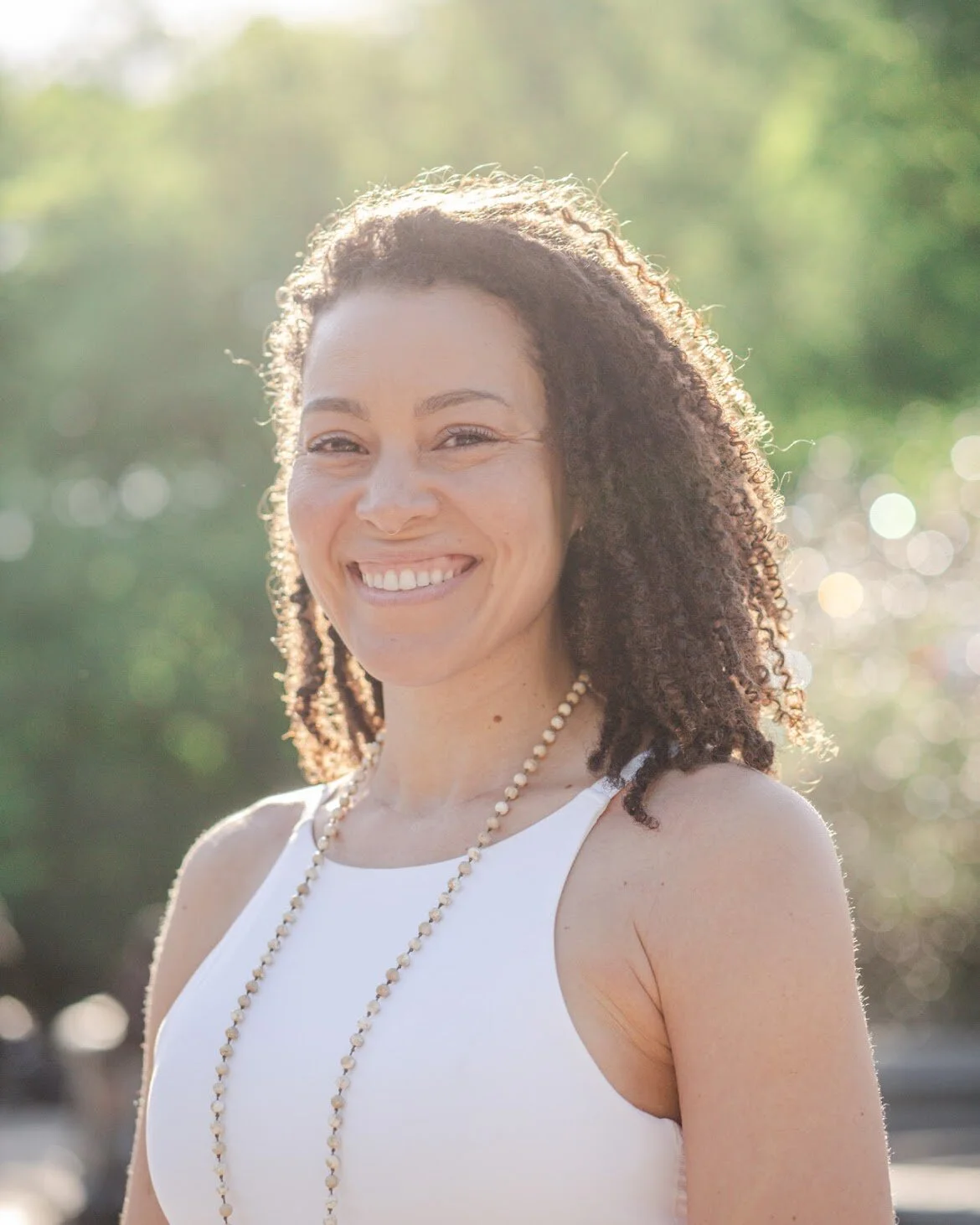Selena La’Chelle Collazo | M.A., M.Ed., A.M./Ph.D., RYT-500, MFT-LP*
Selena La’Chelle Collazo (she/her) seeks to help individuals lead a life in honor of their authentic voice. Selena offers bilingual (English & Spanish), BIPOC, LGBTQIA+, and ENM/poly-affirming liberation and wellness practices including bespoke journaling journeys, personalized yoga sessions, mindfulness meditation, and narrative-based psychotherapy through New York-based Interweave Therapy. Selena holds degrees from the University of California (B.A., Psychology), Endicott College (M.Ed., International Education), Alliant International University (M.A., Counseling Psychology), and Brown University (A.M. & Ph.D., Theatre Arts & Performance Studies). Selena completed her 200- & 300-hour yoga teacher trainings at Sonic Yoga in New York City (RYT-500), participated in the 2021-2022 iBme Mindfulness Teacher Training, and underwent the 2021 Empowered Wisdom Yoga Nidra Teacher Training led by Tracee Stanley & Chanti Tacoronte-Perez in 2021.
*New York limited permit number P111572, under the supervision of Claire Hapke (001443) and Terry LaFrazia (073240)
It all begins with the breath.
I began my personal and professional wellness journey as Psychology undergraduate student at my local University of California campus in the year 2000. While enthusiastically soaking up the wealth of experiences that characterize university life, I began cross-training in world dance forms, double-majoring for most of my college experience. In my freshman year, I sauntered into the campus gym for my first yoga class. As the minutes ticked by, I grew increasingly overwhelmed watching the practitioners attack arm balances and grunt through inversions while I struggled to simply stop sliding across my borrowed mat as my shoulders screamed during my initial attempts at Adho Mukha Svanasana / Downward Facing Dog. I tossed The Yoga Deck by Olivia Miller into my luggage before heading off to study abroad in Morelia, Michoacán, México in the summer of 2002, and before bed each evening I would select a few cards, arrange them in an order that appeased my inner choreographer, and placed them on my borrowed bedside table before turning out the lights. In the mornings I would attempt to hold the preselected poses for a few breaths each—often with more than a little frustration—and by the time I returned to university home, I’d learned the names of enough poses to feel confident enough to take classes at a local yoga studio.
As an aspiring psychotherapist, I began to recognize the patterns that governed my own thoughts and behavior. It became clear that I had gotten very good at treating the present as a means to an end; it was always the destination—not the proverbial journey—that held my attention. Likely due in no small part to the simultaneity of studying psychology and yoga, it dawned on me that if I continued keeping my eyes fixed on the horizon, I would run the risk of one day waking up to the realization that I had not been present for the actual process of living my life. I intuited that the postures (asanas) that comprise yoga classes would become a gateway and the stillness of meditation the path that would lead me to the present. Through the cultivation of conscious breathing I learned how to rest in the present moment and when I took my practice off the mat and cushion, I began to marvel at the beauty found all around me.
While in graduate school I began experimenting with meditation by simply sitting still after a home asana practice. No stranger to heartache, while enduring the aftermath of a particularly painful romantic disappointment I began the practice of sitting each day, allowing the tears to come. Closing my eyes and remaining in my best approximation of a Lotus posture, I watched as my focus went deeper and the tears invariably ceased, leaving a profound sense of calm in their wake. I used this experience as my internal clock, and would complete my sitting after the quiet settled in. I developed a bespoke ritual, following my meditation sitting with morning prayers and journaling before going about my day. This combination of yoga asana, mindfulness of emotions, devotion, and self-study became the basis of my first sadhana (dedicated home practice) that I carried with me across time and space, hardship and celebration. By virtue of mere repetition and as a natural consequence of watching the shifting clouds of my thoughts and emotions over the course of moments and minutes, days and weeks, and months and years, it became clear to me that, indeed, nothing lasts forever. Returning to the cushion became a radical act of faith in my own ability to grow, and that faith blossomed into self-confidence, self-esteem, and, eventually, the kind of self-love that no amount of academic study had been able to foment.
While reading The Yoga Sutras of Patanjali during my initial yoga teacher training, I came across the term pramāna, which Sri Swami Satchidananda defined as “correct or right knowledge”. Taken alongside other translations that include “source of knowledge,” “measure,” and “reliable means of knowledge,” the term struck me as illustrative of my own wellness journey and my goals as a wellness professional. Whether through personalized journaling journeys, personalized yoga sessions, mindfulness coaching, or solutions-focused, narrative-based, liberation psychotherapy, Pramana Wellness is both the means through which I seek to help others along their unique paths and the means by which I do so for myself. Becoming a yoga and meditation practitioner while participating in the introspective practices of journaling and psychotherapy was how I uncovered my truth, and becoming a yoga and meditation teacher, coach, and psychotherapist is how I found the courage to live a life that honors my light.
I am so grateful to be able to share this journey with you.
